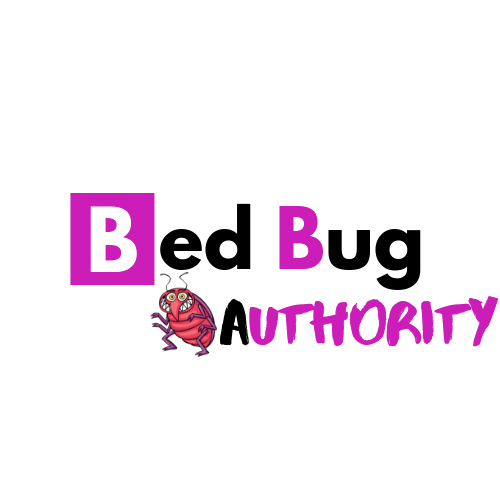
Bed Bugs
Bed bugs are a nuisance and if you’ve discovered bites on your skin, or found those pesky little things crawling around on your bed or nearby, take action right away!
Don’t live with this stressful problem, and don’t spend thousands replacing your mattress or paying an exterminator to perform a treatment that you can do yourself for less.
Take it from me that you can get rid of Bed Bugs yourself. Here’s how you can get rid of bed bugs in just 4 easy steps permanently.
STOP THE BITING
Our first goal in a bed bug treatment is to stop bed bugs from biting you while you sleep. If bed bugs can’t feed, they can’t breed.
If they can’t breed, then they can’t reproduce, and the infestation won’t be able to grow any further.
This means that as soon as you remove their food source (your blood), you set a timer for the infestation to starve off.
KILL BED BUGS IN YOUR BED
To start, strip your bed of all sheets, pillowcases, and other bedding, and seal them in plastic garbage bags to keep bed bugs from escaping and infesting other parts of your home. Take the bags straight to the washing machine, and wash them using the hot water setting.
Remember that heat kills Bed Bugs. Then, dry the bedding on high heat if their tags allow it. This heat treatment will kill any bed bugs or eggs hiding in your bedding.
Use a vacuum cleaner to remove any bed bugs, shells, fecal droppings, or eggs that might be along the seams of your mattress, pillows, box spring, and along the cracks and crevices in the bed frame, headboard, and footboard.
Follow up the vacuuming with a high-pressure steamer to penetrate deep inside mattresses, box springs, bed frames, headboards, and footboards to kill bed bugs and eggs on contact.
While the mattress and box spring are left to dry, spray down the joints of the bed frame, headboard, and footboard with a contact spray and residual spray. The contact spray will kill bed bugs quickly and then evaporate, while the residual spray will kill bed bugs over several weeks.
Remember to follow the sprays’ product labels and MSDS for safe and effective usage.
After the mattress and box spring are dry, encase them in sealed bed bug encasements. Encasements are crucial, as they prevent bed bugs from entering or escaping the mattress and box spring, cutting off-key hiding places. Remember to leave the encasements on for at least 18 months to ensure that any bed bugs already inside have starved to death.
Once the encasements have been applied, you can put your mattress and box springs back on your treated bed frame, and put your laundered bedding back on your bed.
MAKE YOUR BED BITE PROOF
After killing the bed bugs hiding in your bed, it’s time to put up defensive measures to keep them out. Bed bugs can be hiding in all sorts of cracks and crevices throughout your bedroom – in furniture, along baseboards, and inside of the walls – so you need a way to keep them out of your freshly treated bed.
By cutting off the infestation’s food supply (you), you halt their breeding and reproductive cycle, making the treatment a whole lot easier.
Moving your bed away from any other points of contact, like walls, nightstands, and other furniture. Tuck in or remove any hanging skirts or sheets, and remove any storage under the bed that is touching any part of the frame. The only thing your bed should be touching is the floor via its legs.
If you don’t have a bed frame with legs, you should purchase one to sleep in, at least until you are bed bug-free.
To finish the isolation, place ClimbUp Interceptors under each leg of the bed. These interceptors will prevent bed bugs from climbing up your bed legs, stopping them from reaching you in your bed. As bed bugs attempt to get to you, they will climb up the edge of the interceptor and fall into the perimeter pitfall where they can’t escape.
Your bed now fully isolated and elevated, bed bugs hiding elsewhere in the room won’t be able to feed on you or hide in your bed.
You can also use the ClimbUps to monitor the changing population of bed bugs in your home. Hopefully, you will see less and fewer bugs appear in the traps as you go through the next steps.
Now that you have created a safe haven in your bed, you can move on to treating the rest of the room.
STEAM AND CLEAN YOUR ROOM
Bed bugs could be hiding in all sorts of tight spaces in your room, like wood cracks, inside books and furniture, and along the baseboards and the edges of the carpet. In this step, we’re going to clean, vacuum, and steam those areas that bed bugs are likely to be.
This will cut down on the bed bug population while making it harder for survivors to hide.
Start by reducing the clutter in the room; things like clothes, books, and other personal belongings shouldn’t be left on the floor, as they make treatment more difficult and add hiding places for bed bugs and eggs. Seal those items in garbage bags and store them away from the room.
Any clothing that was picked up or removed from dresser drawers should be dried on high heat for at least 45 minutes. Once treated, clothing that you don’t normally wear should be stored inside garbage bags outside of the infested room.
Vacuum and steam along baseboards, window sills, and the edge of the carpet. Once finished with vacuuming, the bag or canister should be cleaned or discarded to limit exposure of bed bugs to other parts of the home. The steamer can also be used to treat sofas, chairs, furniture, and cabinets.
When applying steam, remember to move the nozzle slowly (about one inch per second) to ensure that all bed bugs and eggs are killed.
If you have a suspicion that bed bugs might be hiding in items that can’t be laundered or steamed, like books, papers, luggage, shoes, and dry-clean only clothing, you can treat those with a portable bed bug heater.
Heaters are a popular way to safely heat-treat items during bed bug treatments, or as a preventative tool for travelers who want to ensure that bed bugs can’t escape from their luggage to infest their home.
SPRAY AND POWDER CRACKS AND CREVICES
To finish off any bed bugs you may have missed, and to set up a long-lasting defense for any eggs that hatch in the coming weeks. Use a combination of both contact and residual sprays, as well as a residual powder, to ensure that you cut down the population now and continue killing bed bugs over time.
First up are the contact sprays. These will kill quickly but evaporate shortly after, leaving no long-lasting protection. Spray along baseboards, below drawers and on drawer slides, behind cabinets, and behind nightstands.
Follow up with a residual spray. Residual sprays will offer long-lasting protection against bed bugs and hatchlings and is ideal for cracks and crevices throughout the room.
They can be used below the cushions and bases of sofas, chairs, edges of carpets and other fabric items.
Remember that sprays shouldn’t be applied to areas that you’ll touch, walk on, or sit on. Sprays are designed to treat hiding places that bed bugs are or maybe, and bed bugs tend to not want to hang out in open areas like the carpet or the tops of furniture.
Finally, apply a bed bug powder into confined areas where it won’t be stirred up into the air. Places like the edges of carpeting, inside deep cracks and wall voids, and inside electrical outlets and light switches (accessed by removing the faceplate with a screwdriver) are good candidates for powders, as sprays can’t reach into these areas quite as well.
We recommend using a professional powder applicator, which offers better control when applying the powder.
To make sure that all bed bugs are killed, reapply the contact and residual sprays two weeks after the initial treatment, then again two weeks after that, for a total of three applications. These reapplications make sure that any eggs that have hatched will be killed off so that they can’t create a new infestation.
Bed bug powders will not need to be reapplied, as they work for as long as they remain dry and undisturbed.
Following all of these steps, including the reapplications, you should be bed bug-free in a matter of weeks! You even get to keep the products afterward for prevention purposes, and it all costs less than hiring a pest control professional to perform the treatments. “Sleep Tight and Don’t Let The Bed Bugs Bite”.







